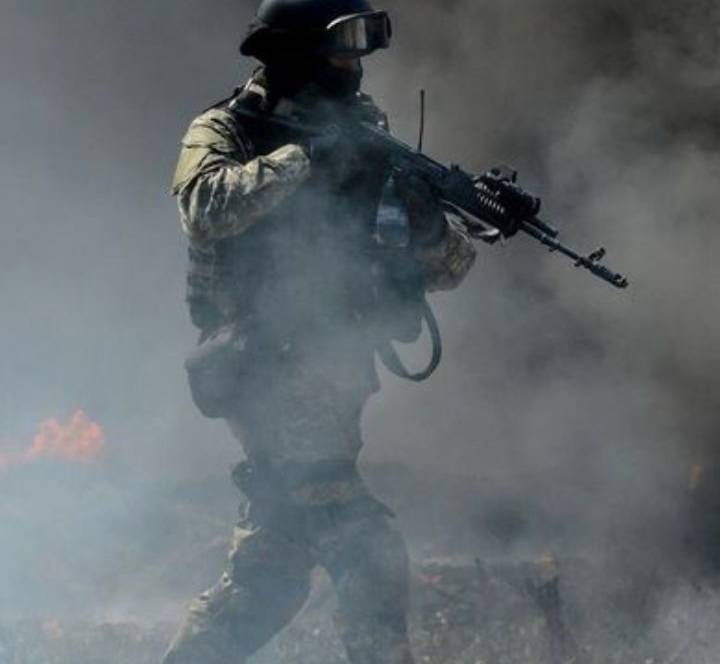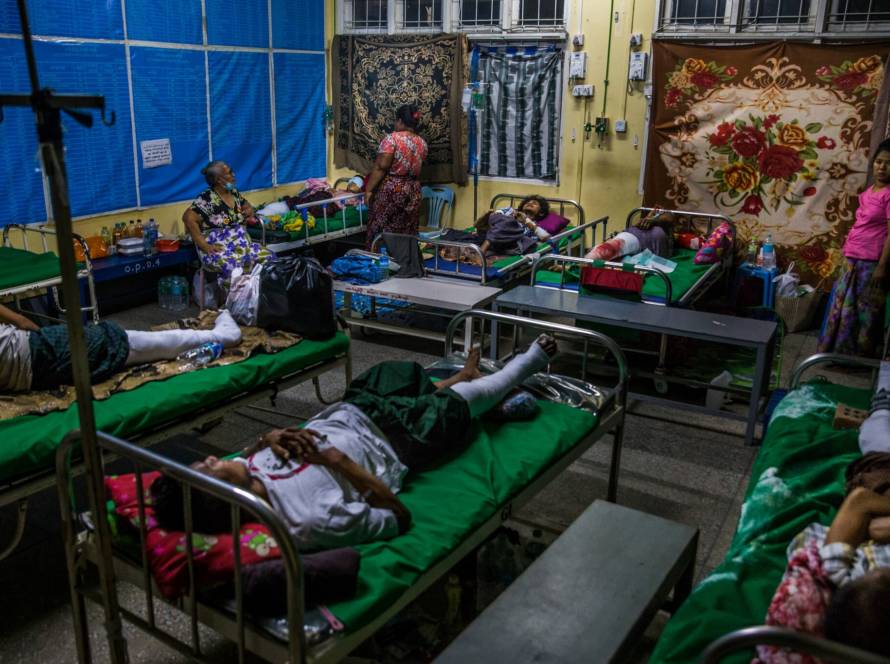By Zeenath Ayub
During the proceedings of the case against Israel before the International Court of Justice (ICJ) about their war on Gaza, Irish Lawyer Blinne Ní Ghrálaigh, representing South Africa, described the situation as
“The first genocide in history where its victims are broadcasting their own destruction in real time, in desperate — and so far, vain — hope that the world might take action.”
Unlike previous wars, journalists in Palestine have become the world’s eyes and ears on the ground, surpassing traditional modes of transmitting information. Through their social media platforms, these journalists have emerged as a voice for the Palestinians in the most challenging situations of the war, revealing the raw truth on the ground as events unfold, unlike anything seen before.
The likes of Wael el Dahdouh, the Bureau Chief of Al-Jazeera in Gaza City, have become prominent figures across social media platforms, in addition to their presence in their respective mainstream media channels.
What sets these journalists apart is the marked difference in their reporting compared to the traditional war reporting witnessed over the years. This distinction extends beyond seasoned war reporters like the American journalist Peter Arnett, who covered key events such as the Gulf War, the Iraq War, and the Vietnam Wars, or other embedded journalists like Michael Kelly, who reported on the Iraq War. Kelly, posted with the US army during the early stages of the Iraq War, became the first American journalist to be killed in the conflict.
In contrast, the Palestinian journalists are not just reporters; they are civilians who are also targets of the Israeli Defense Force. Throughout the 100-plus days of the attacks on Gaza, they have not merely reported on the events; they have lived through them, sharing losses experienced by their friends, family, and colleagues.
Journalists in Gaza, like Wael el Dahdouh, are not embedded with either party in the conflict but are direct representatives of the victims. A poignant example occurred when members of Wael el Dahdouh’s own family were killed by an Israeli airstrike in late October 2023, and yet, he persisted in reporting on the situation, providing a firsthand account of the tragedy.
The distinctive aspect of Palestinian war reporting lies in the fact that these reporters are also the victims; they report on their own experiences. In contrast to award-winning, trained journalists like Peter Arnett, who were sent to war zones for reporting purposes, Palestinian journalists adopt a first-person stance in their reporting, reflecting a deeply personal connection to the conflicts they cover.
Furthermore, these Palestinian journalists stand out as citizens of the war zones, possessing unparalleled knowledge of the region, its history, and the context of the conflict. In other words, no international journalist could comprehend Gaza better than they do.
It is because of this depth of understanding that they have taken it upon themselves to bring to light the current realities of the heinous actions, stemming from the US-sponsored Israeli attacks on them.
There are numerous notable journalists who have stepped forward to provide real-time updates on the relentless bombardment affecting men, women, and children in Gaza. Utilizing social media platforms such as Instagram, TikTok, Twitter, and Facebook, they raise awareness about these atrocities in the hope of prompting global intervention.
What is particularly noteworthy about these journalists is that the majority of them are young and relatively inexperienced, yet they have proven to be more impactful in war reporting compared to many veteran journalists covering conflicts elsewhere.
Most of them are under the age of 25, and Gaza boasts one of the world’s youngest journalists, Lama Abu Jamous, just nine years old. Over the years, Gaza has been home to some of the world’s youngest journalists, like Janna Jihad, who began reporting on the Israeli occupation of Gaza at the age of 10 in 2016.
Lama, on the other hand, is the new young heroine of Gaza, reporting on the ongoing aggression in the region. She utilizes her Instagram account, boasting 712,000 followers, to capture and share real-time images and videos depicting attacks from the Israeli forces, akin to her more experienced counterparts.
Among the other journalistic figures in Gaza who have garnered a substantial following during the war are Motaz Azaiza, Plestia Alaqad, Bisan Owda, and many others.
The substantial number of followers these journalists have on their social media platforms, particularly on Instagram, attests to how they have become vocal advocates for the Palestinian cause. They employ their social media not only to document unfolding events but also to provide personal narratives detailing how their lives have transformed since October.
We observe instances where these journalists share pictures of their homes taken before the aggression, expressing how much they miss their residences. They also utilize their platforms to discuss the challenges they face due to the dire situation in Gaza, which has hindered their ability to prioritize their own health. They document difficulties such as the struggle to replace flat tires and the realities of living in tents.
Undoubtedly, it is the narratives of these journalists that have drawn the world’s attention to the harsh realities of the destruction in Gaza. Just last week, journalist Motaz Azaiza surpassed 18 million followers on Instagram, exceeding the number of followers of the President of the United States, Joe Biden, by one million.
Most activists and individuals, too, utilize the content shared by them to raise awareness about the horrendous situation in Palestine. Hence, it can be asserted that these journalists have garnered more significant support from around the world than mainstream media channels and journalists. This is primarily attributed to the raw and uncensored nature of the content they upload.
They ensure that the world gains an unfiltered understanding of the severity of the attacks they endure. This commitment leads them to share visuals that are challenging to watch, including images of mangled human remains, bloodied bodies of children, and the charred and burnt wounds of patients. Such content, which would typically be censored by mainstream media, serves to convey the grim reality of the situation.
Even journalists affiliated with mainstream media, such as Youmna El-Sayed, Wael el Dahdouh, and Hind Khoudary from Al Jazeera, have transformed into prominent social media figures through their coverage of the ongoing war in Gaza via posts, reels, and stories.
All of these journalists leverage the content they capture on their social media platforms not only as a means of informing the world about the atrocities but also as a way of preserving memories, particularly in the unfortunate event of losing family members due to the war.
We have witnessed many of them venturing into some of the most targeted areas of the Gaza Strip to document unfolding events, putting their lives and safety at risk. Consequently, one could argue that the content emerging from Gaza through the social media accounts of them is unfiltered and genuine, devoid of any fabrication.
However, these social media platforms appear to be engaging in shadow banning against the journalists and their updates. Many journalists in Gaza express frustration over a significant decrease in views for their social media stories and posts since they began sharing war-related content, compared to the engagement levels before the conflict.
Moreover, it is common to observe that a majority of their posts have been removed by Meta, citing guideline violations. In some cases, entire accounts have been taken down by Meta, prompting most Palestinian journalists to maintain backup accounts as a precautionary measure.
Notably, individuals like the American activist Shaun King, who also shared visuals from Gaza on his social media platforms, faced complete bans from Instagram for shedding light on the brutal killing of Palestinian civilians.
Despite the relentless efforts made by journalists in Gaza, there appears to be no guarantee of safety for them, as the Israeli forces seek to silence them through targeted actions. In the first three months of the war on Gaza since October 7, approximately 100 journalists lost their lives, with over 80 of them being Palestinians.
Among the victims was Hamzah el Dahdouh, the eldest son of Al Jazeera’s Wael el Dahdouh, who fell victim to a targeted airstrike by Israel on January 7. The brutal killing of Hamza, just months after the loss of his mother and siblings, can be interpreted as an effort to suppress Al Jazeera’s reporting on the dire situation in Gaza.
Despite journalists in war zones being protected under the Geneva Convention Article 79, we observe this protection being violated through numerous targeted attacks on these individuals by Israeli forces. The killing of journalists, therefore, constitutes a war crime committed by Israel, adding to the list of atrocities that have unfolded throughout the conflict.
The current state in Gaza would have been far graver had it not been for the relentless efforts of these journalists, who courageously unveil the monstrous attacks they face while meticulously documenting every detail. Consequently, it is crucial for international organizations like Human Rights Watch and the Committee to Protect Journalists to take proactive measures in safeguarding the well-being of them.
The war reporting witnessed during the 2023 aggression in Gaza has reached unprecedented heights, signifying a noteworthy chapter in the history of conflict journalism, largely shaped by the extensive use of social media.
Zeenath Ayub is a student researcher who can be reached at zeenathayub20@gmail.com.
Factum is an Asia Pacific-focused think tank on International Relations, Tech Cooperation, and Strategic Communications accessible via www.factum.lk.
The views expressed here are the author’s own and do not necessarily reflect the organization’s.


